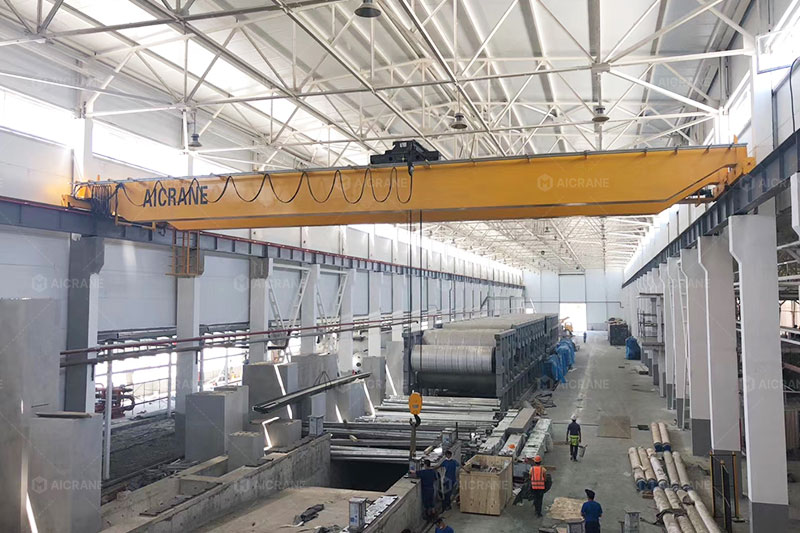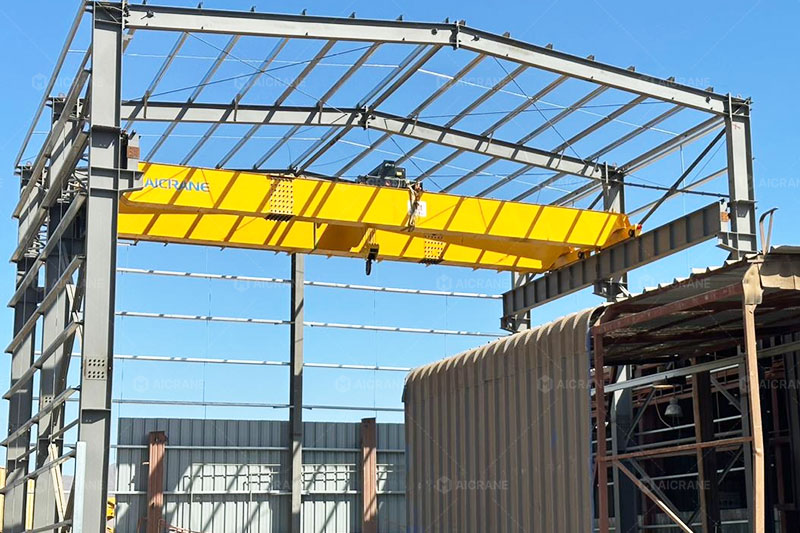Overhead cranes play a critical role in modern industrial facilities, providing efficient and safe lifting solutions for heavy materials and components. Among the many options available, the 30-ton overhead crane is one of the most popular choices for factories, warehouses, steel mills, and construction projects because of its balance between capacity and versatility. However, when businesses begin researching the price of a 30-ton overhead crane, they often encounter wide variations in cost. Understanding the key cost drivers can help you make an informed investment decision, avoid unexpected expenses, and ensure the crane you choose delivers both value and performance.
This article explores the major factors influencing the 30 ton overhead crane price and what buyers should keep in mind when budgeting for such equipment.

1. Type of 30 Ton Overhead Crane
The first and most significant cost driver is the type of crane you select. Overhead cranes come in different designs, and each design has its own price range:
-
Single Girder Overhead Crane: Generally cheaper because of its lighter structure and simpler design. However, a single girder model for a 30-ton capacity is less common and usually not recommended for frequent heavy-duty use.
-
Double Girder Overhead Crane: The most common choice for 30-ton applications. Double girders provide greater strength, stability, and lifting height, but they cost more due to the additional materials and complexity in design.
-
European Standard Overhead Crane: These cranes often come with advanced technology, compact structure, energy efficiency, and higher precision. While they cost more upfront, they can save money in long-term operating costs.
-
Explosion-Proof or Specialized Cranes: If your industry requires explosion-proof, metallurgical, or clean-room cranes, expect a significant increase in cost due to specialized materials and certifications.
2. Span and Lifting Height
Two structural parameters that directly influence the price of a 30-ton overhead crane are span (the distance between rails) and lifting height (the maximum height the hook can reach).
-
Longer spans require more steel and stronger girders, driving up the overhead crane price.
-
Greater lifting heights demand taller supports, longer hoist ropes, and often more advanced motor systems.
For example, a 30-ton crane designed for a compact workshop with a 12-meter span will cost significantly less than one with a 30-meter span and a 20-meter lifting height.
3. Duty Classification and Workload
Overhead cranes are categorized by duty classifications, such as A3, A4, A5, A6, A7, etc., which indicate how frequently and intensively the crane will be used.
-
Light Duty (A3–A4): Suitable for workshops with less frequent lifting. These cranes are less expensive because their components are not designed for continuous heavy use.
-
Medium to Heavy Duty (A5–A6): Designed for regular lifting operations in factories or warehouses. The cost increases because of reinforced components and motors.
-
Severe Duty (A7 and above): Built for steel mills, foundries, and continuous operations. Prices rise sharply because of the higher-quality materials, stronger motors, and advanced safety features required.
When estimating eot crane price, always align the duty classification with your real application needs. Over-specifying can lead to unnecessary costs, while under-specifying risks frequent breakdowns and safety hazards.
4. Hoist and Trolley Configuration
The lifting mechanism – comprising the hoist, trolley, and hook – greatly affects the price. For a 30-ton crane, there are several configuration options:
-
Standard Hook Hoist: Basic and more affordable.
-
European Electric Hoist: Compact, quiet, and precise, but usually more expensive.
-
Customized Trolleys: Special hoist speeds, double trolleys, or rotating hooks can add thousands of dollars to the price.
-
Twin Trolley Systems: If your application requires two hooks working independently or simultaneously, the cost will rise due to added complexity.

5. Control Systems
The method of controlling the crane also influences cost:
-
Pendant Control: Cheapest option, suitable for smaller workshops.
-
Remote Control: Slightly more expensive but provides better operator convenience and safety.
-
Cabin Control: The costliest option, necessary when operators need a clear overhead view of heavy or hazardous loads.
Modern cranes often integrate PLC systems, variable frequency drives (VFDs), and anti-sway technology for smoother operation. These features improve efficiency but increase the upfront price.
6. Materials and Manufacturing Standards
The global steel price, material quality, and the standards followed by the manufacturer also affect costs.
-
High-quality steel and motors add to the expense but ensure longer service life.
-
Compliance with ISO, FEM, CMAA, or European standards raises the cost compared to locally manufactured cranes that may only meet minimum safety codes.
Choosing cheaper materials might reduce the initial investment but often results in higher maintenance and repair costs.
7. Safety Features
Safety is a major concern for heavy-duty equipment like a 30-ton crane. Adding advanced safety features will affect the price but may save costs in the long run. Common safety systems include:
-
Overload protection
-
Emergency stop systems
-
Limit switches for hoist and trolley travel
-
Anti-collision devices
-
Real-time load monitoring systems
While these add to the upfront cost, they can prevent costly accidents, downtime, and liability risks.
8. Installation Costs
The purchase price of a 30-ton overhead crane is only part of the equation. Installation costs can vary significantly depending on site conditions:
-
Foundation and Building Modifications: Reinforcing structures or building new supports may add substantial expenses.
-
Rail and Runway Systems: Longer runways increase both material and labor costs.
-
Local Labor Rates: Installation costs will be higher in regions with expensive skilled labor.
-
On-Site Testing and Commissioning: Safety and performance testing are mandatory and included in overall project costs.
9. After-Sales Service and Maintenance
When evaluating the total price, consider the availability and cost of after-sales services:
-
Warranty Periods: Longer warranties might come with a higher upfront cost but reduce future risks.
-
Maintenance Plans: Preventive maintenance packages add cost but ensure reliability.
-
Spare Parts Availability: Imported or specialized parts may be more expensive to replace.
10. Regional and Market Factors
Finally, external market conditions and regional differences play a role:
-
Import Tariffs and Taxes: If purchasing internationally, taxes and shipping costs may increase the price.
-
Currency Exchange Rates: Prices may fluctuate depending on the buyer’s and seller’s countries.
-
Supplier Reputation: Well-known brands often charge more but provide reliability and better support.
Conclusion
The price of a 30-ton overhead crane is not a fixed figure; it is influenced by multiple factors including overhead crane type, span, duty classification, hoist configuration, control systems, materials, safety features, installation, and after-sales support. While initial cost is important, businesses should also evaluate lifecycle costs, safety, and efficiency to make the best long-term investment.
By carefully assessing your application requirements and working with a trusted supplier, you can strike the right balance between affordability, reliability, and performance – ensuring your 30-ton overhead crane delivers value for years to come.